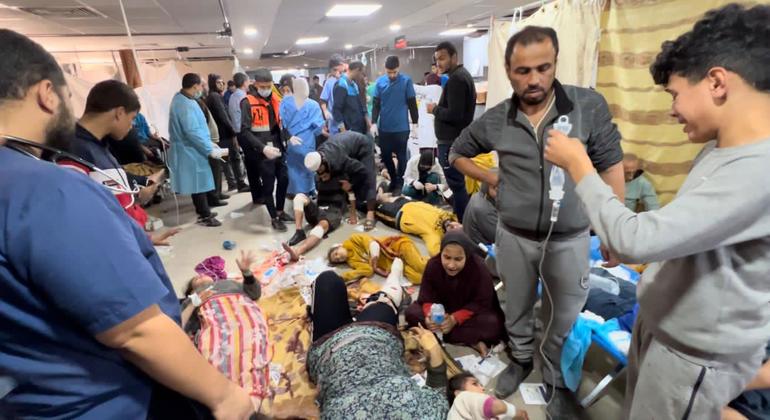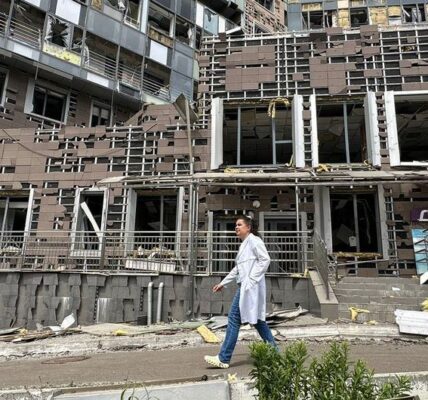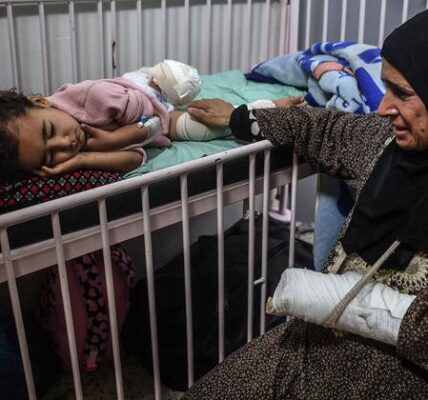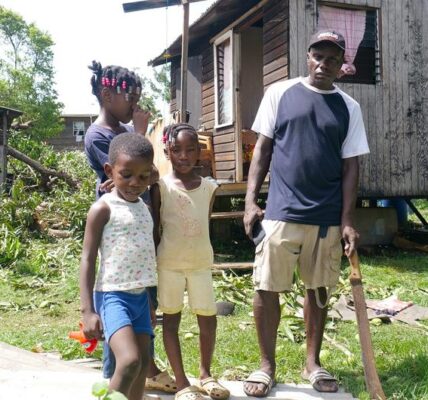WHO and its collaborators provide assistance to two hospitals in Gaza through perilous operations.

The teams that took on dangerous missions experienced intense conflicts nearby, along with a large number of patients and overcrowding due to individuals seeking shelter.
According to their report, the food situation in the enclave is still critical and affecting operations. Hungry individuals are stopping convoys in the hopes of finding food.
The Director-General of the World Health Organization, Tedros Adhanom Ghebreyesus, has urged the global community to take immediate action to address the dire situation in Gaza, which is putting the lives of its inhabitants at risk and hindering the efforts of humanitarian workers to assist those suffering from serious injuries, extreme hunger, and high susceptibility to illness.
Hospitals sheltering thousands
On Tuesday, personnel visited two hospitals: Al-Shifa in the northern Gaza region and Al-Amal Palestine Red Crescent Society (PRCS) in the southern region.
Both hospitals are also providing refuge for individuals who have been displaced due to the ongoing conflict. Al-Shifa has reportedly accommodated 50,000 people, while Al-Amal has provided shelter for 14,000.
At Al-Shifa, the World Health Organization provided fuel to ensure that critical healthcare services continue to operate. Additionally, WHO staff delivered medical supplies and partnered with UNICEF, the UN’s children’s agency. In collaboration with NGO partner World Central Kitchen, WHO also delivered materials to assist in setting up a kitchen at the hospital.
The Gaza Central Drug Store has also obtained medical supplies and will serve as a central location for distributing them to other hospitals.
Impact of strikes
“During their visit to Al-Amal, the teams witnessed the consequences of recent attacks that caused damage to the hospital’s radio tower and disrupted the central ambulance dispatch system for the entire Khan Younis region, impacting over 1.5 million individuals. Currently, only five out of the original nine hospital ambulances are operational.”
According to reports from WHO employees, navigating through the hospital was difficult due to the number of patients and individuals seeking shelter. Additionally, there are only a limited number of usable toilets in the hospital, nearby community buildings, and PRCS training centers.
While passing through Gaza, our team observed a large number of individuals evacuating the Khan Younis and Middle Area due to intense bombings. People were using various modes of transportation such as walking, riding donkeys, or driving cars. Temporary shelters were also being constructed along the route.
are spreading
Concerns about overcrowding and potential diseases are increasing.
The World Health Organization is concerned that this additional displacement will place even more pressure on the already struggling healthcare facilities in the southern region, which are struggling to meet the high demands.
Dr. Rik Peeperkorn, who represents the West Bank and Gaza, stated that the forced displacement of people will result in greater overcrowding, heightened likelihood of infectious diseases, and pose challenges in providing humanitarian assistance.
According to the most recent evaluations from WHO, Gaza currently has a total of 15 hospitals, with 13 functioning partially and 2 functioning minimally. Unfortunately, 21 hospitals are not functioning at all.
The Nasser Medical Complex, a crucial hospital in southern Gaza, is only partially operational. Reports have emerged of nearby residential areas being told to evacuate, causing great concern.
Staff members also stated that there is still a critical demand for food in Gaza. Individuals who are hungry have been halting convoys in order to find food.
The World Health Organization (WHO) reported that their ability to provide hospitals with medicines, medical supplies, and fuel is becoming more limited due to the desperation and hunger of people en route to hospitals and within them.
Ceasefire needed now
Tedros emphasized the urgency of delivering additional food to Gaza in order to ensure the well-being of WHO employees and maintain ongoing operations.
My co-workers are also experiencing the impact of the conflict on a personal level, just like almost everyone in Gaza. I constantly receive heartbreaking updates about the losses they are facing.
He stated that the recent resolution passed by the United Nations Security Council seemed to offer potential for better distribution of humanitarian aid in Gaza.
Unfortunately, despite reports from WHO witnesses on the scene, the resolution has not had any effect. What is needed immediately is a ceasefire to protect innocent civilians from more violence and to start the difficult process of rebuilding and achieving peace.
Unable to rephrase. This appears to be a website URL.



